With over 10,000 species of succulents growing in the wild and in gardens all over the world, it can be difficult to choose one for your garden. The topsy turvy succulent certainly is a unique succulent and one that looks striking in any home.
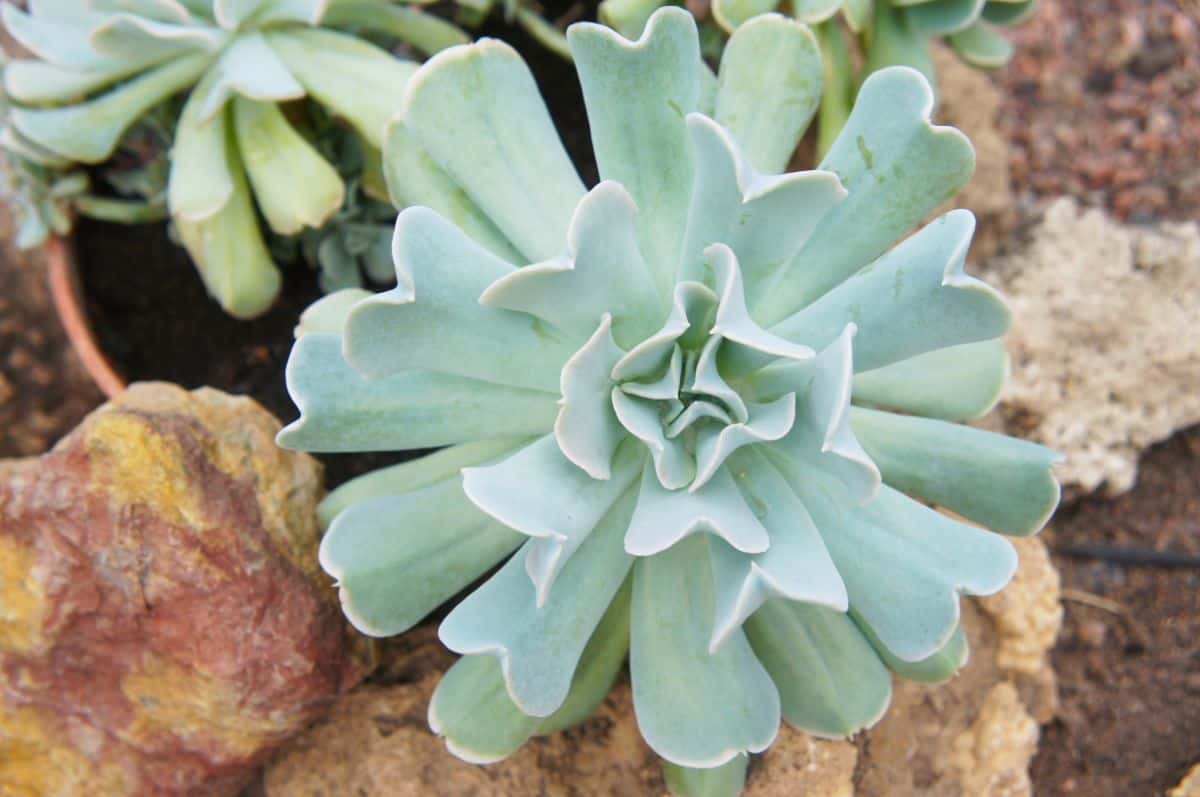
Succulents are well known for being extremely easy to care for. They are low maintenance and thrive in warm, dry climates and even produce flowers during the fall. If you want to learn more about this exotic plant and how to care for it you have come to the right place.
In this article, you will find a topsy turvy care guide and a buying guide that will help you choose which species of succulents to grow in the future. Enjoy!
Jump to:
- About Topsy Turvy Succulents
- Identifying Topsy Turvy Succulents
- Ultimate Care Guide
- Water
- Sun Light
- Temperature
- Soil
- Growing Topsy Turvy Succulents Indoors
- Growing Topsy Turvy Succulents Outdoors
- Succulent Buying Guide
- What to Look For
- Signs to Avoid
- Check your Succulents Roots
- What is Your Hardiness Zone?
- Succulent Size
- Succulent FAQ
About Topsy Turvy Succulents
| Name: | Echeveria runyonii |
| Soil: | Sandy and porous soil mix |
| Blooming: | Summer or Autumn |
| Light: | Full sun - 6 hours minimum |
| Water: | When the soil is completely dry |
| Propagation: | Leaf cuttings |
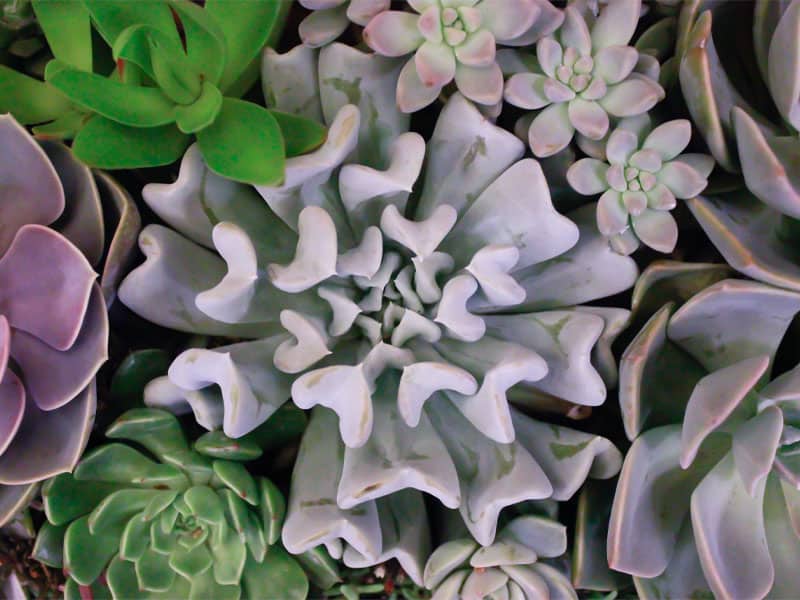
‘Topsy turvy’ isn’t this plant’s scientific name; it is otherwise known as echeveria runyonii. It is an evergreen succulent with a waxy texture and grows stemless rosettes that are roughly four inches wide.
This succulent can be various shades of blue, green, and grey, and its leaves curl downwards as the plant grows. If your succulent is healthy and growing in the right conditions, you can expect delicate yellow flowers to bloom during the fall.
Identifying Topsy Turvy Succulents
You can spot topsy turvy succulents growing in Mexico. If you come across a wild topsy turvy succulent, do not pick it.
If you are unsure whether the succulent you are growing is a topsy turvy plant, take a closer look at the base of the plant. Is there one main stem with leaves growing in a flower formation out of it? Are the leaves curled downwards? If so, it is likely a topsy turvy succulent.
Ultimate Care Guide
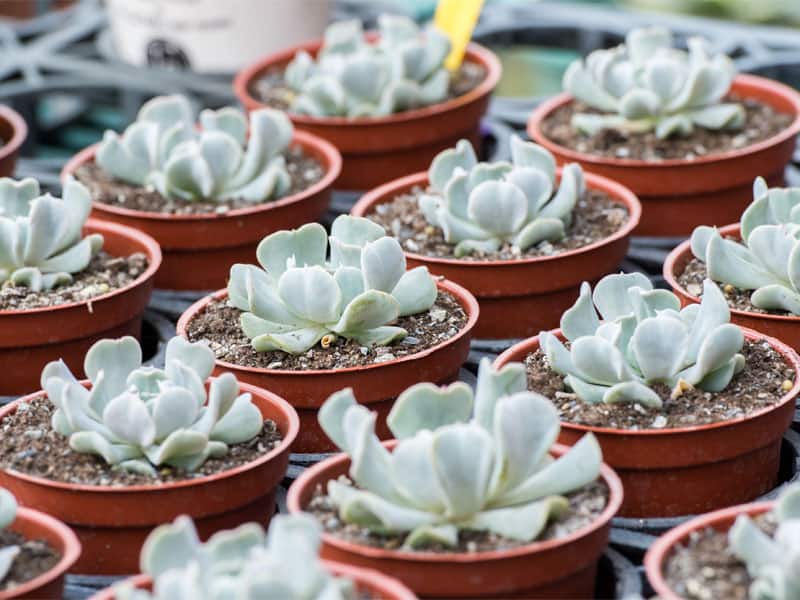
Do not be fooled by this plant’s low maintenance reputation. Sometimes, it is the low maintenance plants that people struggle to keep alive.
Plants that have a strict and repetitive daily care regime are often easier to look after because you can follow a specific care checklist and perform these duties at the same time every day. This is not the case for succulents, especially the topsy turvy succulent.
No products found.
It is important to check your plant on a regular basis for many reasons. Firstly, if the plant isn’t in view, it can be easily forgotten about, and by the time you do remember to check it, it could be too late. Secondly, checking your succulent regularly ensures that you can treat diseases and tackle pests early on.
Take a look at the following care guide for advice:
Water
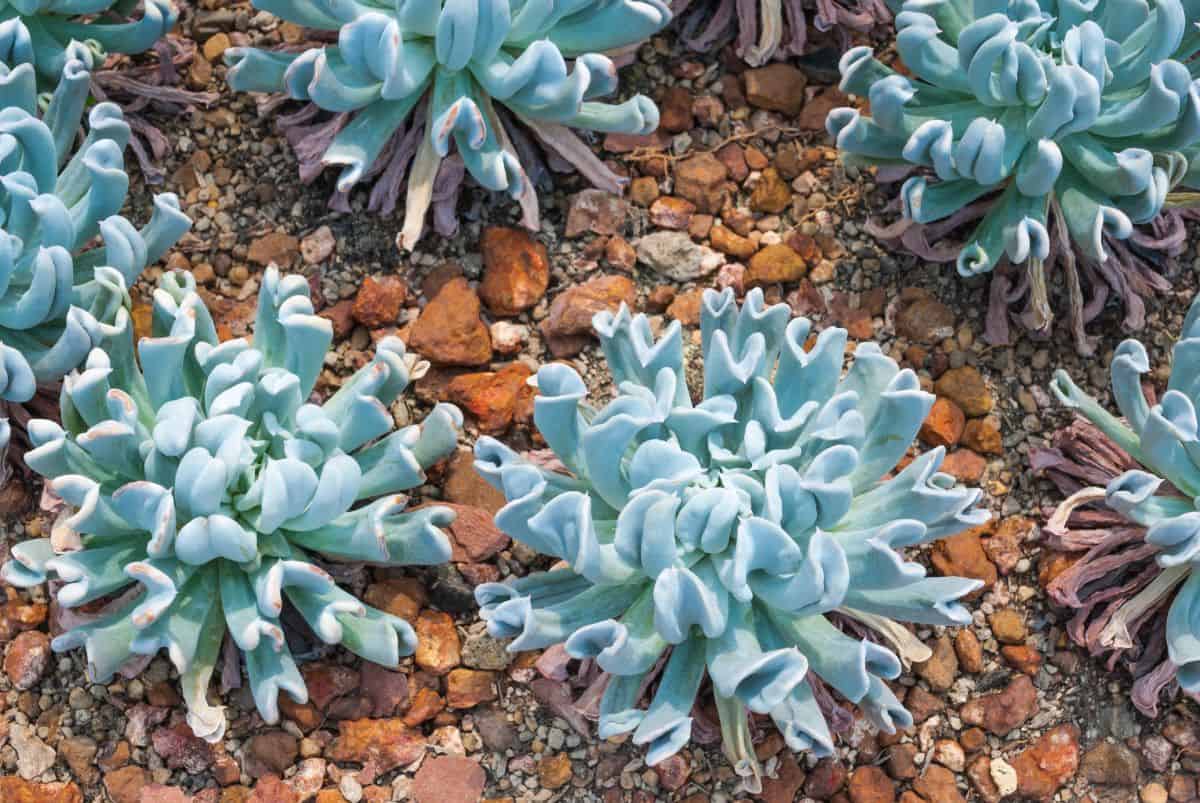
This succulent is extremely sensitive to overwatering and will deteriorate rapidly if it is overwatered. The watering methods for this succulent do not vary from other succulent species, and a go-with-the-flow approach is the best.
It is crucial that you only water your succulent when the soil is completely dry. This could be every week or every month, depending on the seasons and environmental changes. Make a habit of checking the moisture content of the soil on a daily basis.
Sun Light
Topsy turvy succulents are sun-worshiping plants. They need at least six hours of sunlight every day to thrive. You might have noticed that they are covered in chalky powder; this is actually their natural sun-screen. This powder, along with its waxy texture, protects the plant from damage caused by the sun.
Avoid touching your succulent unless it is absolutely necessary as they do not have the ability to reproduce this substance. Damage to their skin will result in scarring and uneven pigment. In unusually hot and sunny climates, you may need to move the succulent into a shaded area during the hottest times of the day.
Temperature
It is important to remember that these plants are not cold hardy. They don’t tolerate frost or rain and will die if left unprotected in these conditions. Topsy turvy plants are winter dormant, so they need less heat, water, and attention during winter.
Soil
You should never plant topsy turvy plants in fertilized potting soil. Not all fertilizers are appropriate for succulents, and it is more than likely that the pre-fertilized soil is inappropriate for your plant.
Shop-bought potting soil is also very dense, in fact, it is far too dense for succulents. Potting soil should be mixed with sandy and porous soil before potting your succulent. I recommend using cactus soil and cactus fertilizer for your succulent.
Growing Topsy Turvy Succulents Indoors
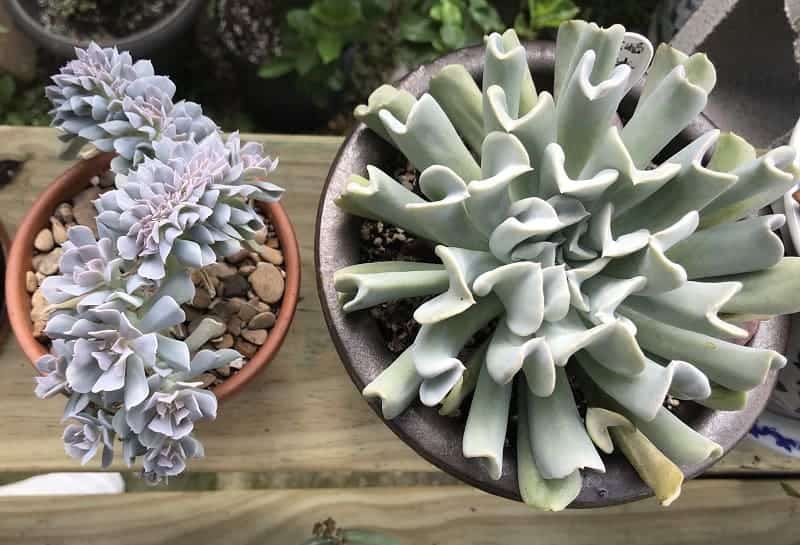
Topsy turvy succulents are outdoor plants. They can be grown in your home, but if you have the option to grow them in a sunny garden, then you should keep them outside.
Succulents look chic and elegant when they are small, hence why so many people like to sit them proudly on their desks. Ideally, you should keep your succulent on a sunny windowsill or in an area that gets more than five or six hours of direct sunlight per day.
Growing Topsy Turvy Succulents Outdoors
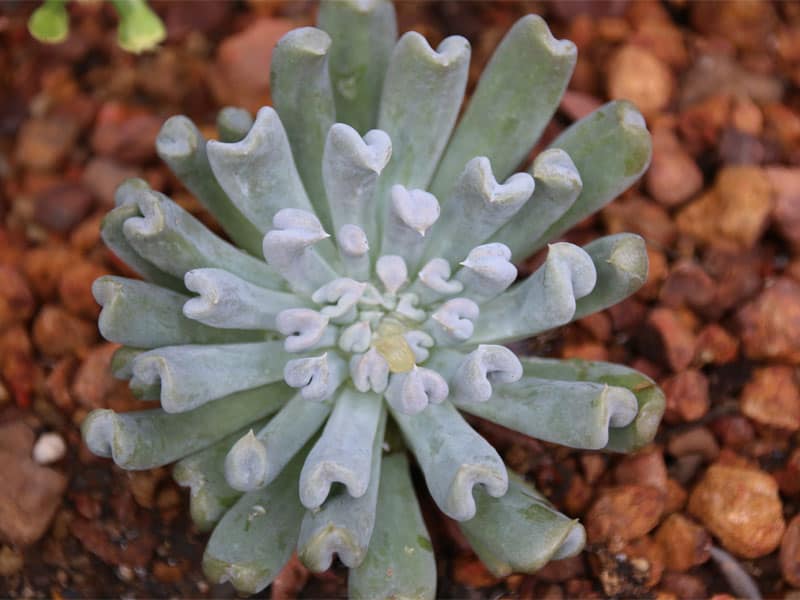
These succulents are ideal for growing outside; however, they have very specific growing conditions and may need more care and attention if you choose to plant them outside.
As you already know, no one can control the weather, but you can build your plants protection and shelter to keep their growing environment as close to their natural habitat as possible. Ideally, these succulents should grow outdoors if you live in zone 9a.
If you do not live in an area within Zone 9a or a similar climate elsewhere in the world, you should think of ways to protect your plant during extreme weather. That means that you should protect it from strong winds, extreme heat, and below-freezing weather.
I recommend planting your succulent in a pot so that you can move it indoors or around your garden for when the weather is not ideal for your succulents. You can also use shade cloths, greenhouses, and wind blocks to protect your plants if you have them.
Succulent Buying Guide
When you go shopping for succulents, be picky, and carefully choose your succulents. Just because you are shopping at a reputable garden center does not mean that all of the plants are healthy. Feel free to follow the buying guide below whenever you go shopping for any type of succulent, not just a topsy turvy plant!
What to Look For
Inspect the plant thoroughly before buying it. Succulents are very delicate plants and can get damaged very easily. Marks and scratches will scar and become permanent features on your plant’s leaves and stem, so choosing the healthiest plant will be beneficial in the long run.
On very rare occasions, you will find succulents with more than one plant in a pot. If you are lucky enough to spot one, buy it! These plants can be divided and grown separately.
Signs to Avoid
If the succulent is showing one or more of the following signs, do not buy it:
- Yellow leaves
- Transparent leaves
- A black stem
- Leaves that fall off easily
Read Related Topic: Baby Toes Succulents - A Care Guide
Check your Succulents Roots
Do not be fooled by the size of the plant and presume that larger plants are healthier. The most important part of the plant is its root system; a well-established root system means your plant has a good chance of surviving.
If you can, you should take the plant out of its pot to inspect its roots. A succulent with a well-established root system will hold the soil together tightly even when the plant is out of its pot.
What is Your Hardiness Zone?
Succulents are very particular about their growing environment. If you want to plant succulents in your garden, you must make sure you are living in a climate that is appropriate for succulents.
Research the type of succulent you want to grow before going into the garden center. Sometimes when we are overwhelmed by choice, we are prone to making uninformed purchases that we regret later.
You should use the information on plants’ tags and take the time out to read what is written on them. This is very useful and will give you an indication of whether the plant is suitable for you or not.
Succulent Size
If you are new to growing succulents, opt for succulents that are the larger size. This is because well-established succulents are easier to grow than baby plants.
You May Also Like: Watch Chain Succulent - An Ultimate Care Guide
Succulent FAQ
Q: Why is my succulent dying?
A: Succulents are very easy plants to grow; however, they are also easy to kill if you haven’t got their care spot on. The most common mistake people make is watering their succulents too often. You should wait until the soil is completely dry before re-watering your plant.
Another common mistake is planting succulents in the wrong soil and in a pot with insufficient drainage. Check this and change your plant’s soil if you feel like it is deteriorating, and plant it in a pot with lots of drainage holes.
Q: Why does my succulent look stretch out?
A: Succulents that do not get enough sunlight will grow very tall and begin to look as if they have been stretched out. This happens quite a lot to succulents that are grown indoors as they are often struggling with the lack of sunlight.
Q: Can succulents be propagated?
A: Yes, succulents are actually very easy to propagate! There are some species of succulents that can be propagated just by re-planting a fallen leaf. You should watch out for overwatering if you are propagating your succulent as repotted leaves or stems could rot before they begin to grow roots. This happens when you use soil that is denser than desired for propagation.
Q: Can I grow echeveria runyonii topsy turvy in rock gardens?
A: Absolutely. ‘Topsy turvy’ echeveria runyonii succulents are brilliant plants to grow in rock gardens.
Here is a topsy turvy video care guide for anyone that wants to use a visual step-by-step care guide as a reference.


